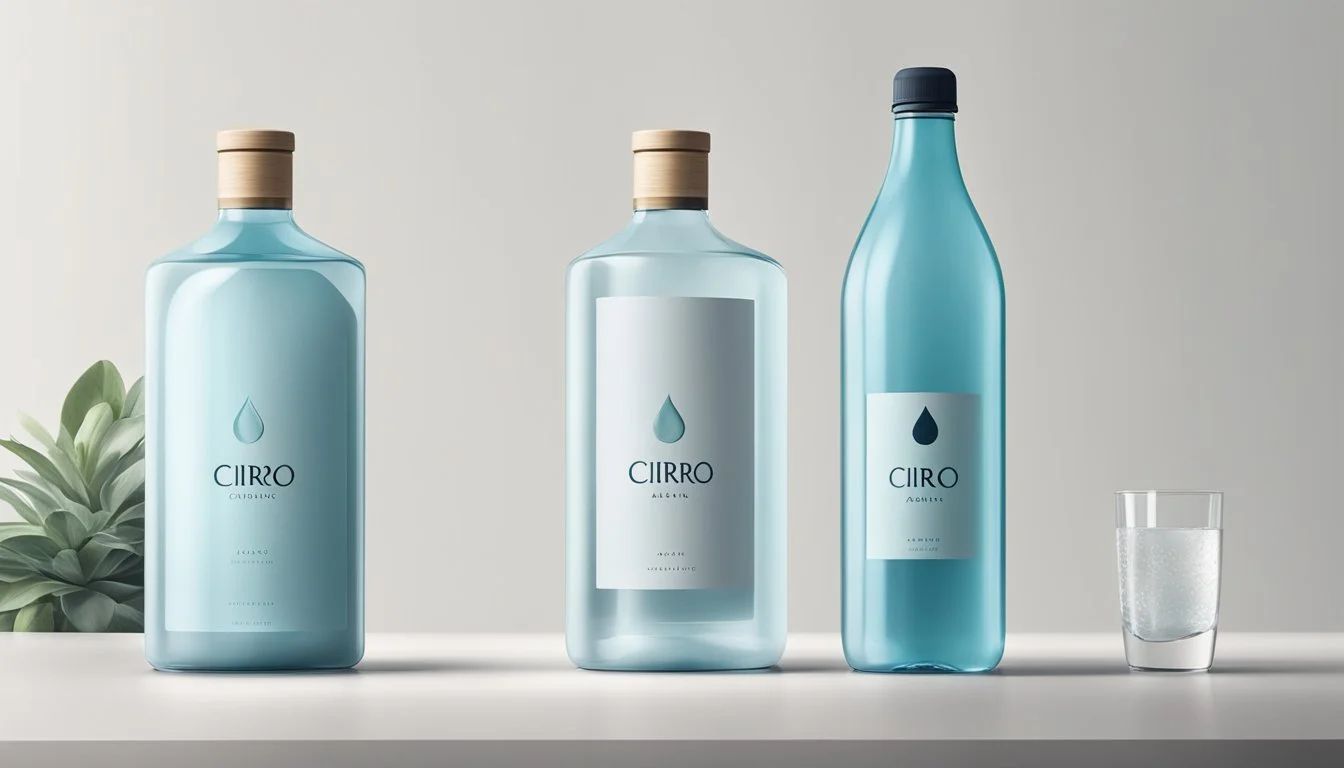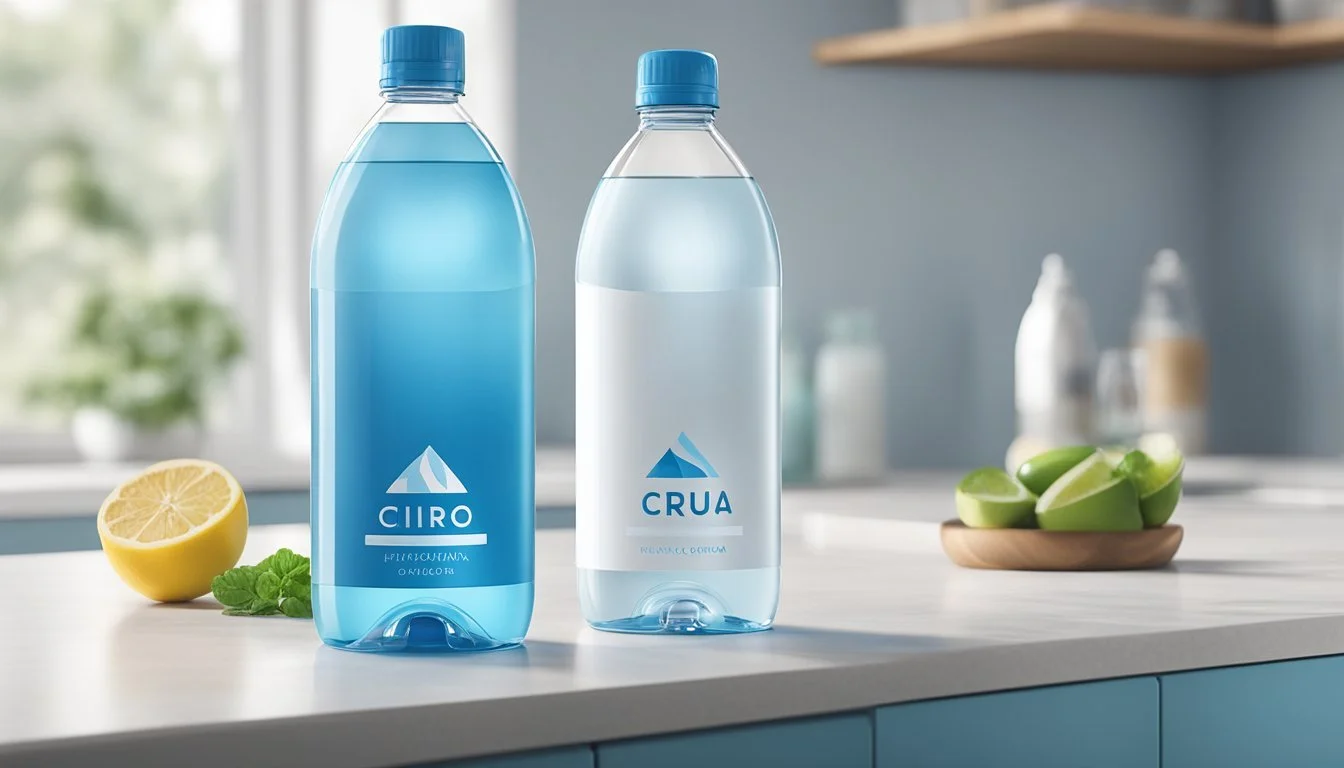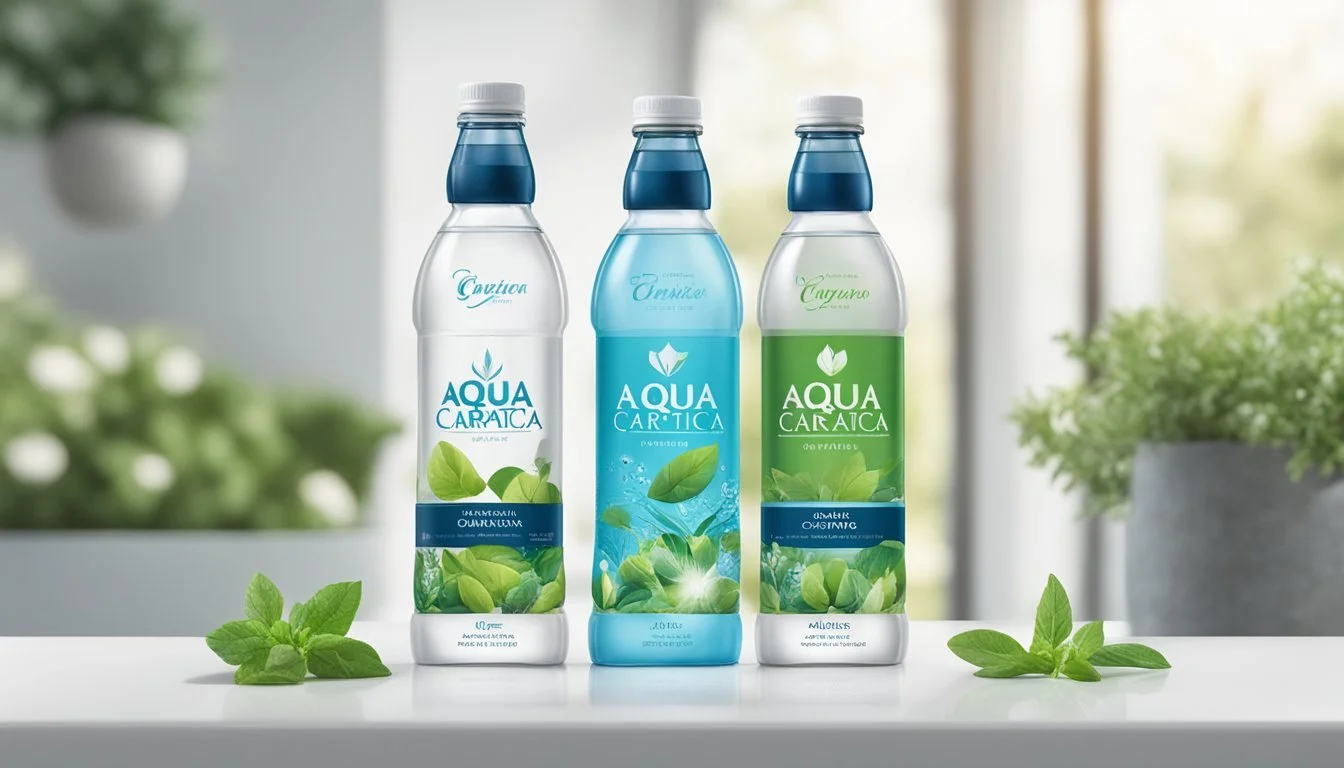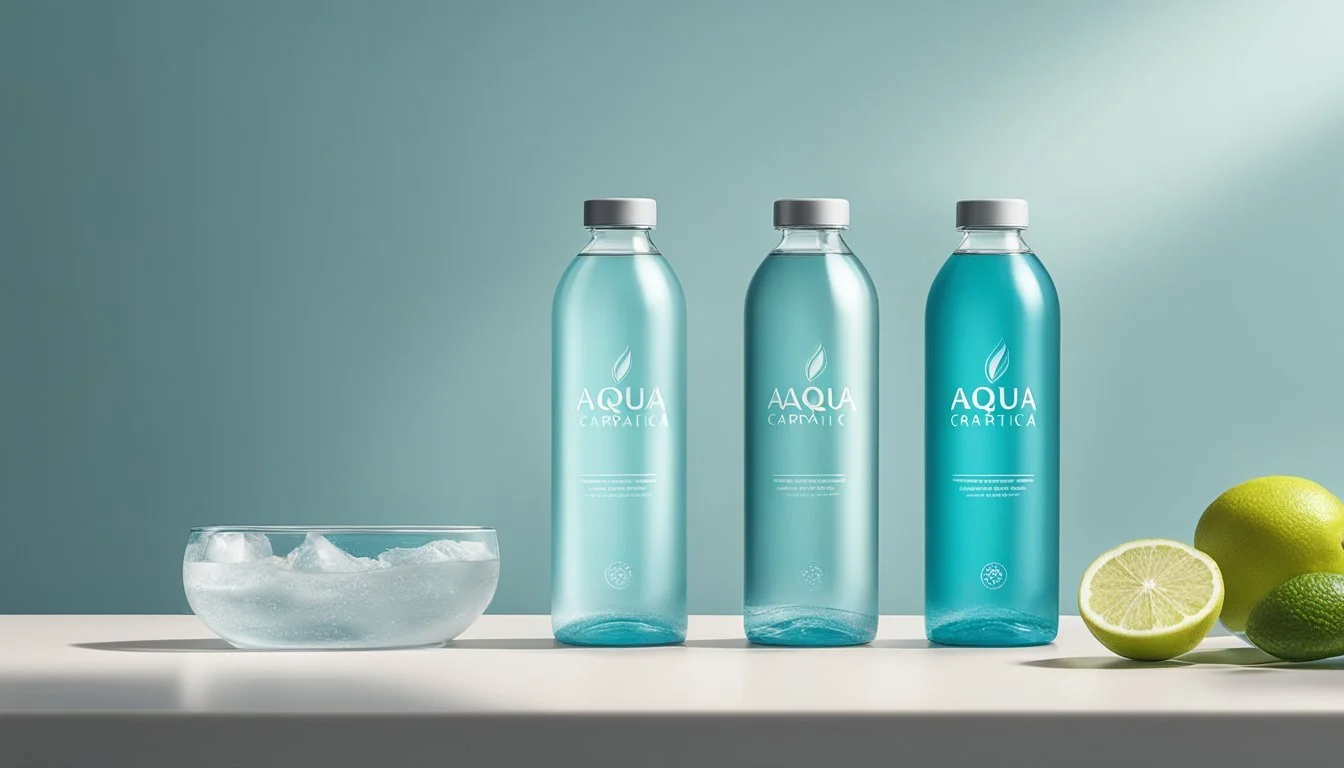Aqua Carpatica vs. Cirro
Comparing Premium Bottled Waters
Choosing the right bottled water can affect not just hydration but also health and taste experiences. Aqua Carpatica, known for its purity and nitrate-free composition, stands out as a premium option in the market. On the other hand, Cirro offers a refreshing taste that has captured a significant consumer base.
When evaluating Aqua Carpatica versus Cirro, Aqua Carpatica's commitment to maintaining a high-quality standard with fresh and pure taste makes it a standout option. Cirro, with its appealing flavor profile, provides a different but equally enjoyable hydration solution.
Both brands have their unique strengths, making the decision between them a matter of personal preference. Dive into this comparison to see which bottled water aligns best with your hydration needs and taste preferences.
Profile and Overview
This section provides insights into the origins and histories of Aqua Carpatica and Cirro, focusing on their unique selling points and background stories.
Aqua Carpatica: Origin and Brand Story
Aqua Carpatica is sourced from the Carpathian Mountains in Romania, one of the most pristine regions in Europe. Known for its natural purity, the water is nitrate-free, making it a standout choice for those seeking a healthier option. The brand is owned by Carpathian Springs SA, which emphasizes sustainable practices and the natural quality of its products. Aqua Carpatica aims to offer premium bottled water that retains the natural minerals without any artificial additives. The brand's key focus is on providing pure, clean water with a commitment to environmental responsibility.
Cirro: Brand History and Source
Cirro, a lesser-known brand compared to Aqua Carpatica, sources its water from natural springs. Although the specific origin and details about the springs are less documented, Cirro positions itself as a reliable bottled water brand that emphasizes quality and purity. The company's branding highlights its dedication to delivering fresh and pure water to its consumers. Cirro ensures rigorous testing and quality control measures to maintain high standards in its bottled water. While not as distinguished in terms of specific source locations as Aqua Carpatica, Cirro remains a popular choice for those looking for a trustworthy bottled water brand.
Water Quality and Composition
Aqua Carpatica and Cirro offer distinct qualities in their bottled water, including mineral content, pH levels, and electrolytes that may benefit health. This section explores these factors in detail.
Understanding Mineral Content
Mineral content in bottled water plays a vital role in taste and health benefits. Aqua Carpatica boasts natural filtration and is nitrate-free, with low sodium levels. It contains essential minerals like calcium, magnesium, and potassium.
On the other hand, Cirro provides a different mineral profile. While it may not emphasize the same nitrate-free claim, Cirro often highlights its balanced mineral composition, which also includes calcium and magnesium, essential for bone health.
pH Level Analysis
pH levels indicate the acidity or alkalinity of bottled water. Aqua Carpatica has a naturally alkaline pH level, typically around 7.8 to 8. This alkalinity can neutralize acid in the body, potentially benefiting those with acid reflux.
Cirro also offers an alkaline pH level, usually ranging from 7.5 to 8.5, promoting similar benefits. The pH level of both brands makes them suitable for those looking to balance their body's pH levels through hydration.
Electrolytes and Health Benefits
Electrolytes like magnesium, calcium, and potassium support various body functions, including muscle function and hydration. Aqua Carpatica is rich in electrolytes, with a natural source of calcium and magnesium, aiding in preventing deficiencies.
Cirro provides these essential electrolytes as well, though their concentration may vary. Both brands focus on delivering high-quality water that supports health through adequate electrolyte levels.
Both Aqua Carpatica and Cirro prioritize providing water that benefits health, focusing on mineral content, pH levels, and necessary electrolytes.
Taste Experience
The taste experience of bottled water can vary greatly depending on its source and mineral content. This section delves into the specific taste profiles and aftertastes of Aqua Carpatica and Cirro, and provides guidelines on conducting a proper taste test to evaluate them effectively.
Taste Profile of Aqua Carpatica
Aqua Carpatica is touted for its smooth and clean taste, a result of its nitrate-free composition. This bottled water offers a subtle mineral flavor that is not overpowering. Many consumers appreciate its balance between softness and the slight salinity, delivering a refreshingly crisp finish.
The low sodium content contributes to the water’s mild flavor, making it suitable for those who prefer a less intense taste. This makes Aqua Carpatica a standout choice for everyday hydration.
Cirro's Flavor Notes
Cirro is known for its pure and clean taste, with reviewers often highlighting its refreshing quality. This water is sourced from pristine locations, imparting a naturally crisp and neutral flavor that is free from any undesirable aftertaste.
Its mineral composition strikes a perfect balance, contributing to its pleasant mouthfeel. The slight sweetness detected by some drinkers adds a layer of complexity, enhancing the overall drinkability of Cirro.
Conducting a Proper Taste Test
To properly evaluate the taste of Aqua Carpatica and Cirro, it is essential to conduct a structured taste test. Use identical glassware to avoid influencing the taste, and ensure both waters are chilled to the same temperature.
Begin by taking small sips, allowing the water to linger in the mouth. Pay close attention to the initial flavor, mouthfeel, and any aftertaste that may develop. A taste test can reveal subtle differences in mineral content and flavor profile.
Record observations meticulously, noting any standout characteristics. Repeated tests with fresh samples will help in forming a consistent opinion on the taste qualities of each water brand.
Packaging and Environmental Impact
Considering both Aqua Carpatica and Cirro, it's important to look at the materials and sustainability aspects of their packaging, as well as their recycling initiatives.
Bottle Materials and Sustainability
Aqua Carpatica and Cirro utilize different materials for their bottles. Aqua Carpatica primarily packages its water in PET plastic bottles. These are 100% recyclable and designed to have a minimal environmental impact. Additionally, they also offer glass bottle options, which are popular for their reusability and lower health risks compared to plastic.
Cirro focuses on using lightweight PET plastic for most of its packaging. This reduces the carbon footprint during transportation. However, while plastic is recyclable, it still poses environmental challenges, particularly if not disposed of properly.
Recycling Initiatives and Eco-friendliness
Aqua Carpatica commits to sustainability by promoting the recycling of their PET plastic and glass bottles. They encourage consumers to participate in recycling programs and invest in campaigns to increase recycling rates. Their efforts aim to ensure that materials are reused, reducing waste.
Cirro also supports environmental sustainability. They emphasize using eco-friendly packaging solutions and partner with recycling programs to boost the effectiveness of their efforts. Cirro's lightweight bottles not only save on transportation emissions but are also easy to recycle, making the brand's collaboration with recycling initiatives crucial for its eco-strategy.
Health and Hydration
Aqua Carpatica and Cirro both offer unique qualities that can influence overall health and hydration. Exploring hydration levels and daily intake, and the differences between mineral water and purified water helps understand their health benefits.
Hydration Levels and Daily Intake
Hydration is essential for maintaining bodily functions. Aqua Carpatica offers natural mineral water, rich in essential minerals like calcium and magnesium, which aid in hydration and support various bodily functions. These minerals can enhance water absorption, potentially improving hydration efficiency.
Cirro, generally offers purified water, which removes impurities and contaminants, providing a clean and crisp taste. While purified water lacks the natural minerals found in Aqua Carpatica, it still effectively quenches thirst and maintains basic hydration needs.
Daily Intake: The recommended daily water intake varies based on factors like age, gender, and activity level. Adults should aim for about 2-3 liters per day. Aqua Carpatica’s mineral content can contribute to meeting daily mineral requirements, while Cirro’s purified water offers a straightforward, clean hydration option.
Mineral Water vs. Purified: What's Better for Health?
Mineral water, like Aqua Carpatica, contains naturally occurring minerals that can offer additional health benefits. Calcium supports bone health, while magnesium aids in muscle function and cardiovascular health. Aqua Carpatica's source in the Carpathian Springs ensures a high-quality and uncontaminated product.
Purified water, such as Cirro, undergoes several filtration processes to remove pathogens, chemicals, and other impurities. This makes it a safe choice for hydration, especially in areas where water quality is a concern. However, the lack of minerals means it might not offer the same health benefits as mineral water.
Comparison:
Mineral Water: Contains essential minerals, supports bone and muscle health.
Purified Water: Free of impurities, safe for all regions but lacks additional mineral benefits.
Key Takeaway: Both types of water hydrate effectively, but mineral water can provide additional health advantages due to its mineral content.
Variety and Options
Aqua Carpatica and Cirro offer distinct choices in bottled water, catering to different tastes and needs. Their product lines include various types of still and sparkling water, each with unique characteristics.
Still and Sparkling: Understanding the Differences
Still water is often preferred for its pure, uncarbonated nature, making it ideal for daily hydration and cooking. Aqua Carpatica offers Still Natural Mineral Water, known for being nitrate-free and tasting fresh and pure. Cirro also provides options, typically valued for their clean profiles free of additives.
Sparkling water, on the other hand, includes carbonation, offering a fizzy alternative to still water. Aqua Carpatica’s Naturally Sparkling Natural Mineral Water maintains a natural carbonated quality, providing a crisp and refreshing experience. Sparkling water is often enjoyed on its own or as a mixer in beverages. Cirro's sparkling options, although less detailed, likely provide similar fizziness as a refreshing counterpart.
Range of Water Types and When to Choose Each
Choosing between still and sparkling water depends on personal preference and usage scenarios. Still water is versatile, suitable for everyday drinking, cooking, and mixing with other beverages due to its neutral taste. Mineral waters like those from Aqua Carpatica are prized for their clean taste and potential health benefits.
Sparkling water is often chosen for its effervescent quality, making it popular during meals or as a refreshing drink on hot days. Options such as Aqua Carpatica’s sparkling variety are naturally carbonated, offering a pure taste that many sparkling water enthusiasts prefer. In comparison, Cirro’s offerings may include variations in carbonation levels and possibly flavor enhancements.
Each brand's range provides options to suit different occasions, whether one prefers the simplicity of still water or the lively bubbles of sparkling water.
Market Comparison and Alternatives
Aqua Carpatica and Cirro face stiff competition in the bottled water market and there are several accessible alternatives.
Comparing with Other Premium Water Brands
Premium bottled water brands such as Fiji, Evian, and Voss set high standards in the market. Fiji Water is prized for its unique aquifer source in Fiji, offering a smooth taste with natural electrolytes. Evian, sourced from the French Alps, is known for its neutral pH and mineral composition.
Voss, with its sleek design, comes from Norway and has a clean, crisp taste. Smartwater undergoes vapor distillation, resulting in a pure, clean taste enhanced with electrolytes. Mountain Valley offers spring water with a light, slightly sweet profile from the Ouachita Mountains.
Acqua Panna from Tuscany, Italy, boasts a velvety texture with balanced minerals, while Icelandic Glacial offers soft water with low mineral content. These brands each bring unique characteristics that differentiate them in the high-end market segment.
Accessible Alternatives to Bottled Water
For those seeking bottled water alternatives, tap water remains readily available and cost-effective. Many municipalities offer high-quality tap water that is safe to drink. Filtered water systems can enhance tap water's taste and remove impurities, making it a viable option.
Boxed Water is another alternative gaining popularity for its environmentally friendly packaging. Brands like Core Hydration and Lifewtr also present enhanced options for those looking for specific benefits such as balanced pH levels or added minerals.
Lastly, Gatorade and similar electrolyte drinks provide hydration with the added benefit of electrolytes, offering alternatives for those in need of more than just water. These accessible options provide a range of choices for various consumer needs.
Consumer Insights and Availability
Consumers are increasingly selective about their bottled water choices. Pricing, value, and distribution channels are key factors influencing decisions. This section will compare Aqua Carpatica and Cirro in these aspects.
Pricing and Value Considerations
Aqua Carpatica is positioned as a premium bottled water, primarily due to its naturally nitrate-free quality. It's often priced higher than standard bottled water brands. Consumers may find it available around $1.50 to $2.00 per liter. Cirro, on the other hand, is marketed as an affordable option, generally priced between $1.00 to $1.50 per liter.
Despite the higher cost, Aqua Carpatica offers significant value for health-conscious consumers interested in low sodium levels and naturally pure water. Cirro offers a good balance of cost and quality, appealing to budget-conscious buyers who still seek a refreshing taste.
Where to Buy: Accessibility and Distribution Channels
Aqua Carpatica has a strong retail presence, often found in upscale grocery stores and health-focused retailers. Platforms like Ocado and Amazon regularly stock this brand, providing convenient options for online shoppers. Bulk purchasing is also feasible through these channels.
Cirro bottled water is widely accessible in mainstream supermarkets and convenience stores, making it easy to find for spontaneous purchases. Amazon provides another reliable distribution outlet for Cirro, ensuring availability for those preferring online shopping.
In summary, both Aqua Carpatica and Cirro are readily accessible, with Aqua Carpatica leaning towards premium retail locations and Cirro being more broadly available across various retail outlets.
Expert Opinion and Sommelier Insights
Aqua Carpatica and Cirro bottled waters have garnered attention from experts and publications alike. This section explores recommendations from water sommeliers and insights from editorial reviews and awards.
Water Sommelier Recommendations
Water sommeliers are trained to evaluate various aspects of water, similar to wine sommeliers. Aqua Carpatica is often praised for its purity, being nitrate-free and having a low sodium level. These attributes make it a standout choice for those concerned about contaminants and dietary sodium.
Cirro, known for its balanced mineral content, is favored by some sommeliers for its clean and crisp taste profile. The subtle sweetness and smooth texture of Cirro often place it on the preferred lists for those who appreciate a neutral and refreshing taste.
Editorial Reviews and Awards
Publications like Olive Magazine cite Aqua Carpatica for its natural purity and low nitrate content. It's highlighted for standing out in competitive taste tests and garnering positive editorial reviews for its quality and health benefits.
Cirro, though less frequently featured in mainstream editorial reviews, has its own accolades. Specialist water publications and fine water experts commend its balanced mineral composition. Despite not having as many awards as Aqua Carpatica, Cirro is valued by connoisseurs for its consistent quality and taste.
Both brands deliver on their promises of high-quality bottled water, each with unique strengths highlighted by experts and reviewers.







